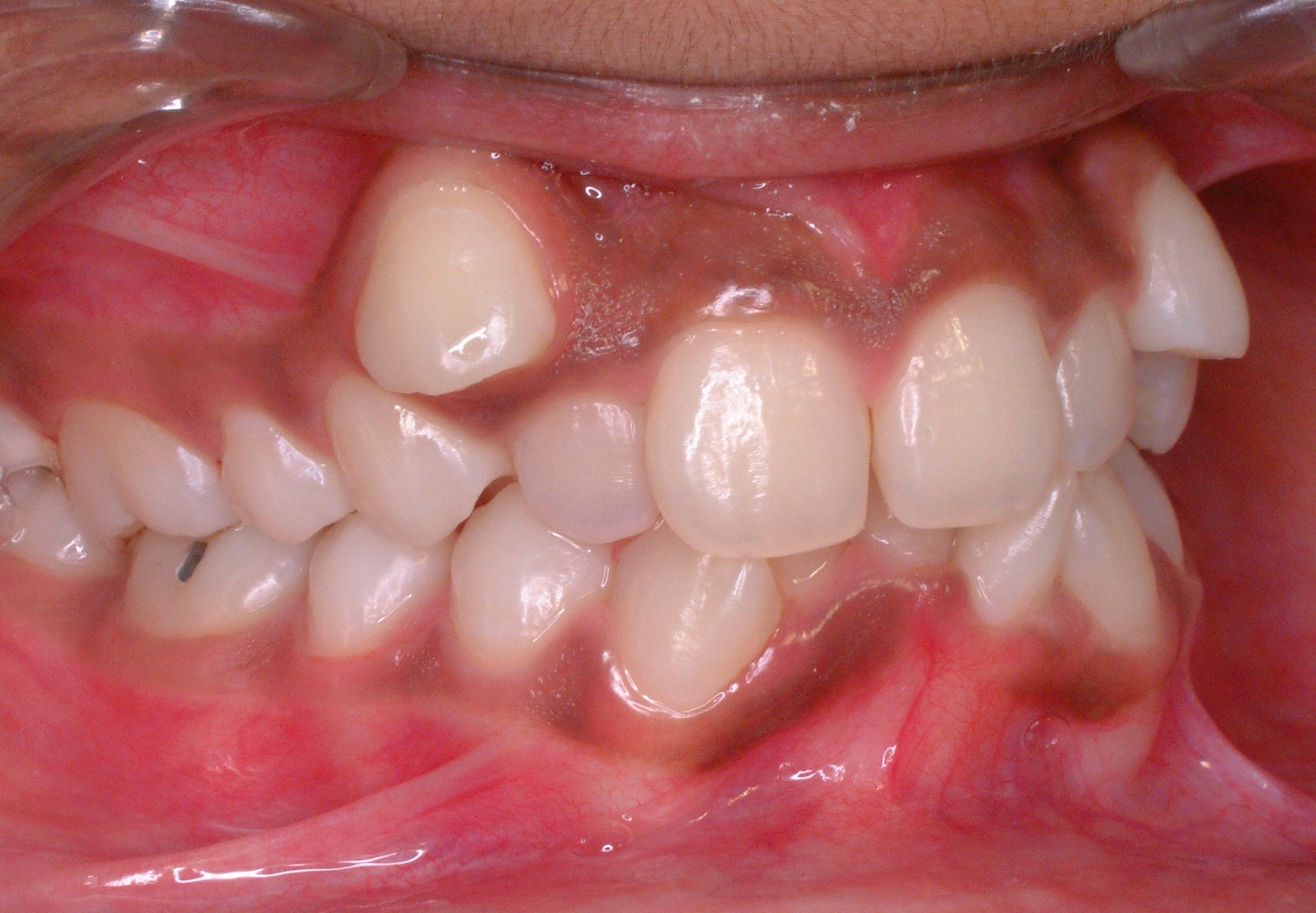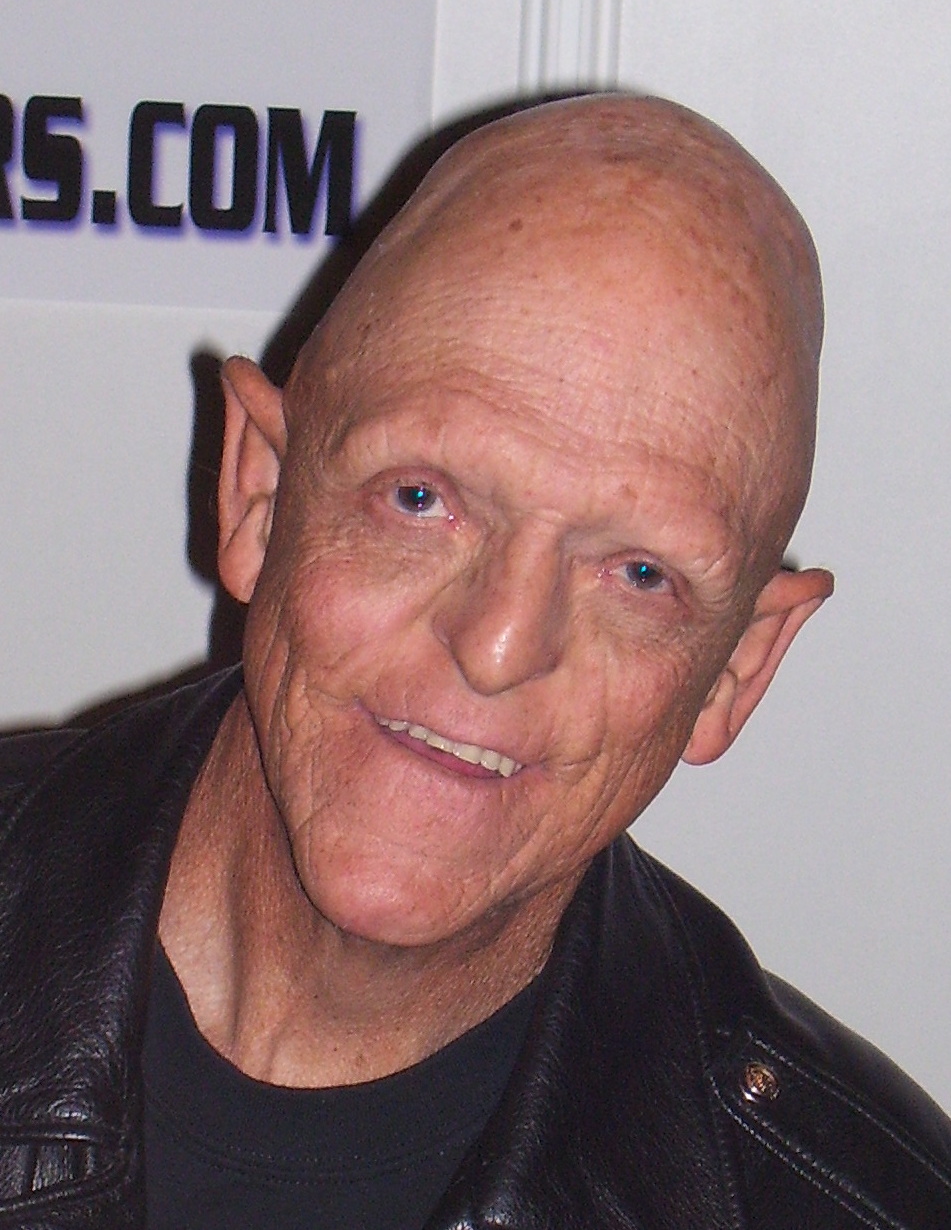|
Hypodontia
Hypodontia is defined as the developmental absence of one or more teeth excluding the third molars. It is one of the most common dental anomalies, and can have a negative impact on function, and also appearance. It rarely occurs in primary teeth (also known as deciduous, milk, first and baby teeth) and the most commonly affected are the adult second premolars and the upper lateral incisors. It usually occurs as part of a syndrome that involves other abnormalities and requires multidisciplinary treatment. The phenomenon can be subdivided into the following according to the number of teeth concerned: #Hypodontia: one to six missing teeth excluding the third molars #Oligodontia: six or more missing permanent teeth excluding the third molars #Anodontia: complete absence of teeth Signs and symptoms Typically, all baby teeth will be present by the age of three. As for all adult teeth, they erupt between the ages 6 to 14, with the exception of the third molar, also known as the wisd ... [...More Info...] [...Related Items...] OR: [Wikipedia] [Google] [Baidu] |
MSX1
Homeobox protein MSX-1, is a protein that in humans is encoded by the ''MSX1'' gene. MSX1 transcripts are not only found in thyrotrope-derived TSH cells, but also in the TtT97 thyrotropic tumor, which is a well differentiated hyperplastic tissue that produces both TSHß- and a-subunits and is responsive to thyroid hormone. MSX1 is also expressed in highly differentiated pituitary cells which until recently was thought to be expressed exclusively during embryogenesis. There is a highly conserved structural organization of the members of the MSX family of genes and their abundant expression at sites of inductive cell–cell interactions in the embryo suggest that they have a pivotal role during early development. Function This gene encodes a member of the muscle segment homeobox gene family. The encoded protein functions as a transcriptional repressor during embryogenesis through interactions with components of the core transcription complex and other homeoproteins. It may also h ... [...More Info...] [...Related Items...] OR: [Wikipedia] [Google] [Baidu] |
Malocclusion
In orthodontics, a malocclusion is a misalignment or incorrect relation between the teeth of the upper and lower dental arches when they approach each other as the jaws close. The English-language term dates from 1864; Edward Angle (1855-1930), the "father of modern orthodontics", popularised it. The word "malocclusion" derives from ''occlusion'', and refers to the manner in which opposing teeth meet ('' mal-'' + ''occlusion'' = "incorrect closure"). The malocclusion classification is based on the relationship of the mesiobuccal cusp of the maxillary first molar and the buccal groove of the mandibular first molar. If this molar relationship exists, then the teeth can align into normal occlusion. According to Angle, malocclusion is any deviation of the occlusion from the ideal. However, assessment for malocclusion should also take into account aesthetics and the impact on functionality. If these aspects are acceptable to the patient despite meeting the formal definiti ... [...More Info...] [...Related Items...] OR: [Wikipedia] [Google] [Baidu] |
Ectodermal Dysplasia
Ectodermal dysplasia (ED) is a group of genetic syndromes all deriving from abnormalities of the ectodermal structures.James, William; Berger, Timothy; Elston, Dirk (2005). ''Andrews' Diseases of the Skin: Clinical Dermatology''. (10th ed.). Saunders. . More than 150 different syndromes have been identified. Despite some of the syndromes having different genetic causes, the symptoms are sometimes very similar. Diagnosis is usually by clinical observation, often with the assistance of family medical histories so that it can be determined whether transmission is autosomal dominant or recessive. Ectodermal dysplasias are described as "heritable conditions in which there are abnormalities of two or more ectodermal structures such as the hair, teeth, nails, sweat glands, salivary glands, cranial-facial structure, digits and other parts of the body." Presentation Hair Individuals affected by an ED syndrome frequently have abnormalities of the hair follicles. Scalp and body ... [...More Info...] [...Related Items...] OR: [Wikipedia] [Google] [Baidu] |
Hypohidrotic Ectodermal Dysplasia
Hypohidrotic ectodermal dysplasia is one of about 150 types of ectodermal dysplasia in humans. Before birth, these disorders result in the abnormal development of structures including the skin, hair, nails, teeth, and sweat glands.Freedberg, et al. (2003). ''Fitzpatrick's Dermatology in General Medicine''. (6th ed.). McGraw-Hill. . Presentation Most people with hypohidrotic ectodermal dysplasia have a reduced ability to sweat ( hypohidrosis) because they have fewer sweat glands than normal or their sweat glands do not function properly. Sweating is a major way that the body controls its temperature; as sweat evaporates from the skin, it cools the body. An inability to sweat can lead to a dangerously high body temperature ( hyperthermia) particularly in hot weather. In some cases, hyperthermia can cause life-threatening medical problems. Affected individuals tend to have sparse scalp and body hair ( hypotrichosis). The hair is often light-coloured, brittle, and slow-growing. T ... [...More Info...] [...Related Items...] OR: [Wikipedia] [Google] [Baidu] |
PAX9
Paired box gene 9, also known as PAX9, is a protein which in humans is encoded by the ''PAX9'' gene. It is also found in other mammals. Expression and function This gene is a member of the Pax genes, paired box (PAX) family of transcription factors. During mouse embryogenesis Pax9 expression starts from embryonic day 8.5 and becomes more evident by E9.5; at this stage its expression is restricted to the pharyngeal endoderm. Later on, Pax9 is also expressed in the axial skeleton. Pax9 is required for craniofacial, tooth and limb development, and may more generally involve development of Stratified squamous epithelium, stratified squamous epithelia as well as various organs and skeleton, skeletal elements. PAX9 plays a role in the absence of wisdom teeth in some human populations (possibly along with the less well studied AXIN2 and MSX1). Clinical significance This gene was found amplified in lung cancer. The amplification covers three tissue developmental genes - NK2 home ... [...More Info...] [...Related Items...] OR: [Wikipedia] [Google] [Baidu] |
Dentistry
Dentistry, also known as dental medicine and oral medicine, is the branch of medicine focused on the teeth, gums, and mouth. It consists of the study, diagnosis, prevention, management, and treatment of diseases, disorders, and conditions of the mouth, most commonly focused on dentition (the development and arrangement of teeth) as well as the oral mucosa. Dentistry may also encompass other aspects of the craniofacial complex including the temporomandibular joint. The practitioner is called a dentist. The history of dentistry is almost as ancient as the history of humanity and civilization with the earliest evidence dating from 7000 BC to 5500 BC. Dentistry is thought to have been the first specialization in medicine which have gone on to develop its own accredited degree with its own specializations. Dentistry is often also understood to subsume the now largely defunct medical specialty of stomatology (the study of the mouth and its disorders and diseases) for which reas ... [...More Info...] [...Related Items...] OR: [Wikipedia] [Google] [Baidu] |
Prosthodontics
Prosthodontics, also known as dental prosthetics or prosthetic dentistry, is the area of dentistry that focuses on dental prostheses. It is one of 12 dental specialties recognized by the American Dental Association (ADA), Royal College of Surgeons of England, Royal College of Surgeons of Edinburgh, Royal College of Surgeons of Ireland, Royal College of Surgeons of Glasgow, Royal College of Dentists of Canada, and Royal Australasian College of Dental Surgeons. The ADA defines it as "the dental specialty pertaining to the diagnosis, treatment planning, rehabilitation and maintenance of the oral function, comfort, appearance and health of patients with clinical conditions associated with missing or deficient teeth or oral and maxillofacial tissues using biocompatible substitutes." History Dental prostheory was pioneered by French surgeon Pierre Fauchard during the late 17th and early 18th century. Despite the limitations of the primitive surgical instruments, Fauchard discovered ... [...More Info...] [...Related Items...] OR: [Wikipedia] [Google] [Baidu] |
Orthodontics
Orthodontics is a dentistry specialty that addresses the diagnosis, prevention, management, and correction of mal-positioned teeth and jaws, and misaligned bite patterns. It may also address the modification of facial growth, known as dentofacial orthopedics. Abnormal alignment of the teeth and jaws is very common. Nearly 50% of the Developed country, developed world's population, according to the American Association of Orthodontics, has malocclusions severe enough to benefit from orthodontic treatment: although this figure decreases to less than 10% according to the same AAO statement when referring to medically necessary orthodontics. However, conclusive scientific evidence for the health benefits of orthodontic treatment is lacking, although patients with completed orthodontic treatment have reported a higher quality of life than that of untreated patients undergoing orthodontic treatment. Treatment may require several months to a few years, and entails using dental braces and ... [...More Info...] [...Related Items...] OR: [Wikipedia] [Google] [Baidu] |
Pediatric Dentistry
Pediatric dentistry (formerly pedodontics in American English or paedodontics in Commonwealth English) is the branch of dentistry dealing with children from birth through adolescence. The specialty of pediatric dentistry is recognized by the American Dental Association, Royal College of Dentists of Canada, and Royal Australasian College of Dental Surgeons. Pediatric (also paediatric or pædiatric) dentists promote the dental health of children as well as serve as educational resources for parents. It is recommended by the American Academy of Pediatric Dentistry (AAPD) and the American Academy of Pediatrics (AAP) that a dental visit occurs after the presence of the first tooth or by a child's first birthday. The AAPD has said that it is important to establish a comprehensive and accessible ongoing relationship between the dentist and patient – referring to this as the patient's "dental home". This is because early oral examination aids in the detection of the early stages of t ... [...More Info...] [...Related Items...] OR: [Wikipedia] [Google] [Baidu] |
Cosmetic Dentistry
Cosmetic dentistry is generally used to refer to any dental work that improves the appearance (though not necessarily the functionality) of teeth, gums and/or bite. It primarily focuses on improvement in dental aesthetics in color, position, shape, size, alignment and overall smile appearance. Many dentists refer to themselves as "cosmetic dentists" regardless of their specific education, specialty, training, and experience in this field. This has been considered unethical with a predominant objective of marketing to patients. The American Dental Association does not recognize cosmetic dentistry as a formal specialty area of dentistry. However, there are still dentists that promote themselves as cosmetic dentists. Fields There are primarily two dental specialties that predominantly focus on dental aesthetics. They are: # Prosthodontics and # Orthodontics Common cosmetic dentistry options Types Cosmetic dentistry may involve: # the addition of a dental material to teeth or gums � ... [...More Info...] [...Related Items...] OR: [Wikipedia] [Google] [Baidu] |
United States Atomic Energy Commission
The United States Atomic Energy Commission (AEC) was an agency of the United States government established after World War II by U.S. Congress to foster and control the peacetime development of atomic science and technology. President Harry S. Truman signed the McMahon/Atomic Energy Act on August 1, 1946, transferring the control of atomic energy from military to civilian hands, effective on January 1, 1947. This shift gave the members of the AEC complete control of the plants, laboratories, equipment, and personnel assembled during the war to produce the atomic bomb. An increasing number of critics during the 1960s charged that the AEC's regulations were insufficiently rigorous in several important areas, including radiation protection standards, nuclear reactor safety, plant siting, and environmental protection. By 1974, the AEC's regulatory programs had come under such strong attack that the U.S. Congress decided to abolish the AEC. The AEC was abolished by the En ... [...More Info...] [...Related Items...] OR: [Wikipedia] [Google] [Baidu] |






